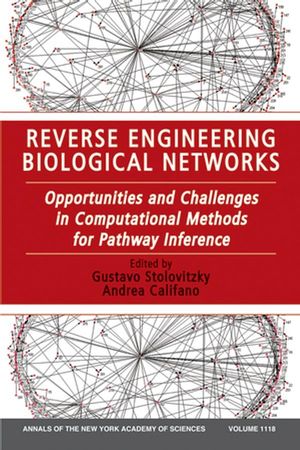Reverse Engineering Biological Networks: Opportunities and Challenges in Computational Methods for Pathway Inference, Volume 1118ISBN: 978-1-57331-689-7
Paperback
452 pages
December 2007, Wiley-Blackwell
 |
||||||
Computational biologists are striving to "reverse engineer" the
underlying networks of interactions between the molecules in the
cell. This volume and the conference it reports on attempt a
systematic evaluation of reverse engineering methods. The DREAM
project brings together a diverse group of researchers to clarify
potentials and limitations of the enterprise of reverse engineering
cellular networks. An important aspiration of the project is to
compare the effectiveness of different methods in reverse
engineering biological networks. Evaluating this requires a "gold
standard" network for which at least the true topology of
connections is known. Many participants, especially the
computational biologists, believe that synthetic networks are good
candidates for this purpose because, at least for now, only they
can be described with certainty. Experimental biologists, however,
worry that unless the project addresses real biological networks,
it could evolve into a mathematical exercise with little impact on
biology. These and other ideas are discussed.
NOTE: Annals volumes are available for sale as individual books or as a journal. For information on institutional journal subscriptions, please visit www.blackwellpublishing.com/nyas.
ACADEMY MEMBERS: Please contact the New York Academy of Sciences directly to place your order (www.nyas.org). Members of the New York Academy of Science receive full-text access to the Annals online and discounts on print volumes. Please visit http://www.nyas.org/MemberCenter/Join.aspx for more information about becoming a member



